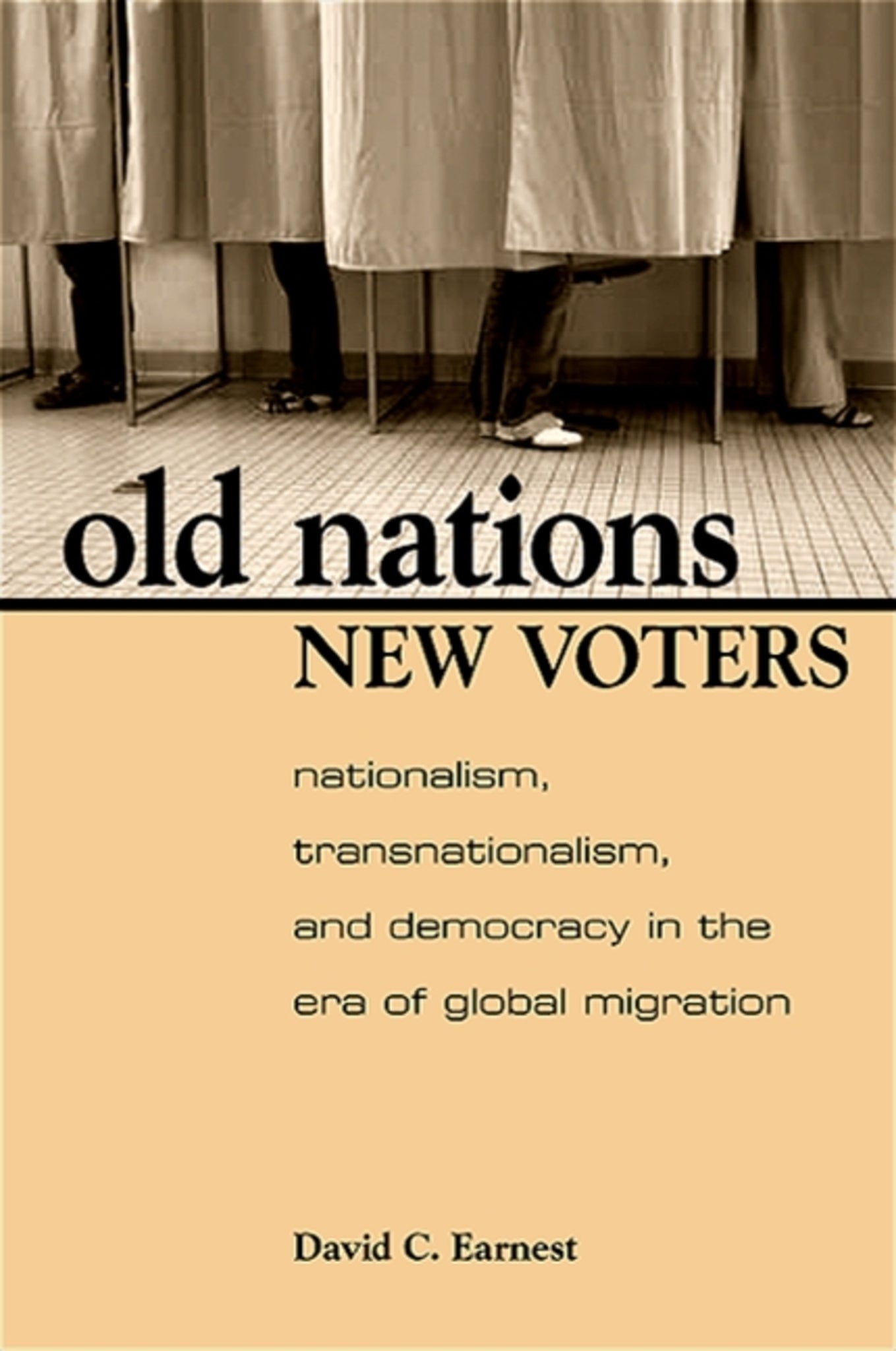We're sorry. An error has occurred
Please cancel or retry.
Old Nations, New Voters

Some error occured while loading the Quick View. Please close the Quick View and try reloading the page.
Couldn't load pickup availability
- Format:
-
13 November 2008

Groundbreaking empirical study of voting by resident aliens in established democracies.
In this groundbreaking study, David C. Earnest analyzes why democracies give noncitizens the right to vote. Bringing together theoretical debates in international relations and comparative politics about globalization, sovereignty, nationalism, citizenship, and state building, he examines how twenty-five democracies are coping with growing populations of immigrants who increasingly demand political rights. Earnest employs statistical analyses, along with case studies, to uncover surprising facts-that national courts are not necessarily progressive and that the left-right differences of political parties disguise intriguing coalitions that may either welcome or marginalize immigrants. The author concludes that rather than undermining the rights of citizens, the enfranchisement of noncitizens reflects shared national myths. In this respect, when faced with growing migration, old nations welcome new voters in ways that reinforce the bond between the nation and state.


"In this thoughtful, well-written, tightly argued and methodologically rigorous book, David C. Earnest asks why a surprising number of liberal democracies grant voting rights to non-citizens or resident aliens. His query could not be more timely." — Journal of Ethnic and Migration Studies
"This is a very ambitious study that builds on earlier scholarship on a relatively little-researched topic of great significance. The author crafts a model and empirically tests hypotheses. This is a major breakthrough in an area of mainly descriptive writing." — Mark J. Miller, coauthor of The Age of Migration: International Population Movements in the Modern World, Third Edition
"The author's point that rights for aliens will be influenced in a significant way by the respective citizenship tradition is a welcome reminder for migration research. In addition, the book furthers our knowledge about the application of time-series cross-section design, and it introduces new ways of dealing with major errors in these types of studies. It is thus of interest to both migration researchers and researchers designing similar studies." — Sabine Dreher, Near East University
List of Illustrations
Acknowledgments
1. The Democratic Dilemma of Migration
2. The Voting Rights of Resident Aliens: An Empirical Overview
A Typology of Resident Alien Suffrage
Voting Rights Granted by Localities
Discriminatory Regimes
Nondiscriminatory Regimes
Discrimination through Residency Qualifications
Alien Suffrage in National Constitutions
Resident Alien Voting Rights in International Law
Negative Cases: States That Have Rejected Alien Suffrage
Why Enfranchise? A Preview
Implications for the Research Design
3. Nationalism and Transnationalism: Hypotheses on the Political Incorporation of Resident Aliens
Nationalism and Transnationalism: An Overview
Hypothesized Causes of Political Incorporation
Conclusion: Convergence or Heterogeneity?
4. Study Population, Measures, and Estimation Strategy
Population of the Study
Dependent Variables: Voting Rights for Resident Aliens
Measures for the Independent Variables
Control Variables
Longitudinal Coverage
Model Specification and Methods of Estimation
Conclusion
5. Statistical Findings
The Ordered Probit Model
The Probit Model
Conclusion
6. Case Studies: Political Incorporation and Historical Institutionalism
The Netherlands
The Federal Republic of Germany
Belgium
Conclusion
7. Theoretical Implications
The Influence of History: Citizenship, Nationhood, and Rights
State Institutions and Voting Rights for Aliens
Systemic Factors: Traces of Transnationalism
Next Steps
8. Sovereignty and the Nation
Appendix A: Problems with Demographic Data on Resident Aliens
A Note about Sources for Demographic Data
Appendix B: Codebook
Dependent Variables: Measures and Sources
Identifiers, Independent and Control Variables
Appendix C: Descriptive Statistics and Correlation Matrix
Notes
Reference List
Index



